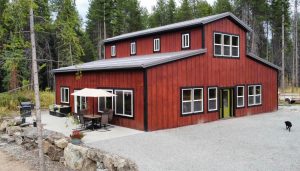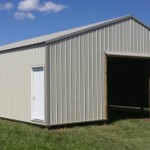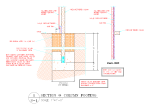Pole Barn Plans With Clerestory Roofs
Reader BRENT in HUNTSVILLE writes:
 “Do you have any plans for pole barns with a Celestial Shed Roof? It seems like a great way to allow natural light into the building while being an aesthetic design.” By coincidence, I have a son named Brent!
“Do you have any plans for pole barns with a Celestial Shed Roof? It seems like a great way to allow natural light into the building while being an aesthetic design.” By coincidence, I have a son named Brent!
In architecture, a clerestory is a high section of wall containing windows above eye-level. Its purpose is to admit light, fresh air, or both.
Historically, a clerestory formed an upper level of a Roman basilica or nave of a Romanesque or Gothic church, with walls rising above rooflines of lower aisles and pierced with windows.
Modern clerestories often are defined as vertical windows, located on high walls, extending up from roofline, designed to allow light and breezes into a space, without compromising privacy. Factory buildings often are built with clerestory windows; modern housing designs sometimes include them as well.
Modern clerestory windows may have another especially important role, besides daylighting and ventilation: they can be part of passive solar strategies, in very energy-efficient buildings (passive houses and zero-energy buildings).
To this end, clerestories are used in conjunction with stone, brick, concrete, and other high-mass walls and floors, properly positioned to store solar heat gains during day’s hotter parts – allowing walls and floor to act as a heat bank during cooler parts of day.
Clerestories – in passive solar strategies – should be properly located (typically on sunny side of building) and protected from summer’s sun by rooflines, overhangs, recessed thick walls, or other architectural elements, in order to prevent overheating during cooling season. We have provided numerous fully engineered post-frame buildings with clerestories. Most commonly used are monitor style buildings. We have also done what amounts to two opposing single sloping rooflines, adjoined so as high side of one slope is above upper side of other roof.









